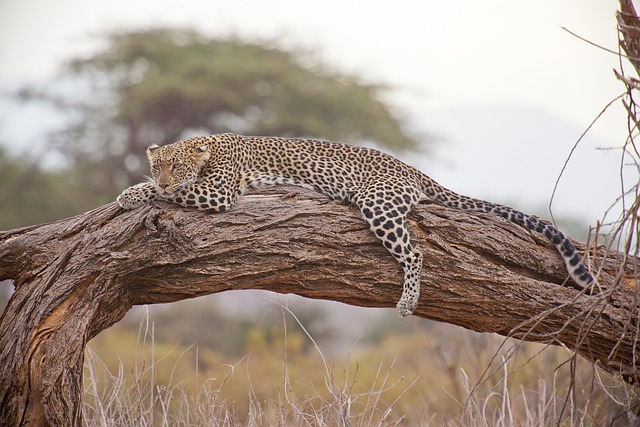By David Barclay | January 4, 2024

I’ve had a lot of interest from clients for safari vacations, it’s on almost everyone’s travel bucket list. Africa is a large country and the options for a safari vacation are numerous, there’s no one particular way to go on safari. It wouldn’t be possible to cover all of the options in a single blog post, so this week I thought I’d start by covering the high-level basics of a luxury safari. Broadly what it’s like to go on a luxury safari, where you can go, and what you can see and do.
Where to go
Africa is a very large continent, you could fit the United States, India, Western Europe, and China within it with room to spare. But that doesn’t mean planning a safari is complicated or overwhelming. There are many countries that can offer an incredible safari experience, allowing visitors to see the Big 5 in addition to other incredible animals. There are two key regions which are popular for safari vacations: Southern Africa and East Africa.
Southern Africa
The countries of Angola, Botswana, Lesotho, Mozambique, Namibia, South Africa, Swaziland, Zambia, Zimbabwe make up Southern Africa. Southern Africa is a great region for a first safari, as it’s easier to get to many of the countries from the U.S. and a Southern Africa vacation can provide a combination of days on safari with days spent in urban areas. Guests can combine stays at safari lodges with winery visits and side trips to see many natural & geological wonders. The experience is also more first world, with many fine hotels/resorts located in and around the major cities and many Michelin star restaurants available for foodies. This can be a good first introduction to Africa for travelers who may not have taken an expedition style vacation before. South Africa is probably the most visited country for travelers going on safari, with some travelers staying completely within that country. Others may add in a visit to Botswana for more safari experiences or Mozambique for a few days of beach time. Travelers with a little more time may add Zambia and/or Zimbabwe to visit the famous Victoria Falls.
East Africa
When people think of an African safari, they probably envision an East Africa safari. Tanzania, Kenya, Uganda, and Rwanda are probably the best-known countries for safari, and each provides a unique safari experience. In Tanzania and Kenya, visitors can see the Great Migration, the largest animal migration in the world. Every year, over 2 million animals (wildebeest, zebra, gazelle, and other herd animals) migrate in a clockwise direction from the Serengeti in Tanzania to the Masai Mara in Kenya. The large number of animals attracts many predators, including lions, cheetahs, crocodiles, and hyenas. Tanzania is also home to Mt. Kilimanjaro, which makes a beautiful backdrop for incredible wildlife photos and a climbing adventure for some visitors to Africa.

Rwanda and Uganda are known for gorilla trekking and the chance to get close to gorilla families and see how they interact in the wild. Many visitors to Tanzania & Kenya will add on a side trip to Rwanda or Uganda given the relatively short distances to reach these two countries.
When to travel to Africa
One of the benefits of the size of Africa and its multiple climate zones is that you can visit anytime. Somewhere in Africa will have the perfect weather for a trip at any point in the year. This is beneficial for travelers who can only travel at certain times of the year, they can still have a great visit to Africa and safari experience.
Those with flexibility for when they travel may choose travel dates based on specific wants and interests for their trip. July through September is the peak travel period for those going on safari, as this is the dry season in many of the popular safari areas. Rain is minimal and the grass/vegetation is short, allowing a better view of the wildlife. Travelers interested in the Great Migration and seeing thousands of wildebeest thundering across the rivers (as shown many times in National Geographic specials) will want to visit between June and August. But it’s possible to see the Great Migration at any point in the year, as the animals don’t just disappear, they simply follow the annual circular path of the migration. Travelers who want to see Victoria Falls will want to visit during the high-water months (February to May), when the falls are in full force. Travelers visiting in the low-water season (October and November) will be disappointed as the falls will be down to a trickle of water.

Offseason travel can have its benefits though. The green season (November to March) will have lower rates which can help travelers stretch their budgets to include a few extra days or splurge on their accommodation. This time of year is also the best time to visit Cape Town and the wine country, as these are the summer months with the best weather (Cape Town weather is opposite to the weather seen in the popular safari regions).
What defines a “luxury” safari
As with any luxury vacation, a luxury safari elevates the travel experience, with better accommodations, greater privacy, and more unique experiences.
National Parks and Private Concessions/Reserves
National parks are open to the public which means they can get crowded during peak season, with dozens if not hundreds of safari vehicles in close proximity to each other, all trying to crowd around the wildlife. Luxury safaris will focus on visiting private concessions/reserves. These may border the national parks but are private land and therefore the general public is restricted from entering. Many of these private concessions/reserves are 30,000+ acres and guests can spend many days on game drives and still not visit every part of the concession/reserve. With the limited number of guests at the concessions/reserves, the game drive vehicles can spread out and guests might not see another vehicle until they return to the lodge after the game drive. The lodges in these concessions/reserves also limit the number of guests per vehicle (a max of 6) so no guest is seated in a middle seat and every guest has an unobstructed view out of the vehicle. These lodges can also arrange private vehicles for game drives if guests wish.
Lodges & Tented Camps
The lodges utilized in a luxury safari can rival any 5-star resort in any other part of the world. Suites will likely come with beautiful views of the grounds surrounding the lodge and may include perks such as private plunge pools. The tented camps can provide one of the best glamping experiences, with hard wood floor, air conditioning, hot/cold running water, mini bars, etc. Whether a lodge or a camp, it will be situated in a beautiful area, likely perched up on a hill, with elephants, giraffes and other animals wandering around in the distance, so guests do not need to be on a game drive to enjoy the wildlife.
The Experience
As to be expected, the experience on a luxury safari will be elevated. The cuisine will thrill even the most diehard foodie and it’s a mostly all-inclusive experience at the lodges and camps. The staff-to-guest ratio will be high, and they will be attentive to every guest’s needs. In some cases, travelers may have a private guide traveling with them for the entire safari trip. Many lodges will also offer kids programs and special game drives for younger travelers.
When to book
Safaris are popular and the peak travel periods can book up quickly. At a minimum, you should plan your safari at least 6 months in advance. For the peak summer/early fall periods, look to plan at least 12 months in advance.
Length and Cost of a luxury safari
These are always big questions for clients looking at a potential safari vacation. A typical itinerary will run 12-14 nights. While it is possible to plan a shorter trip (7-8 nights), given the distance and travel time to get to Africa, I generally don’t recommend planning for less than 10 nights (plus travel time to/from Africa). For travelers with more time, it’s very possible to spend several weeks traveling, which enables multiple countries to be included in the itinerary.
Moderate luxury safaris can start at $750-$800/per person/per day. For a 10-12 day trip that would be about $8,000-$10,000 per person. For a typical luxury safari, which would include some of the better lodges/camps for accommodations, it will generally cost about $1,500/pp/day or around $15-20K per person for a 10-14 day trip. For access to the best ultra-luxury lodges, with private butlers and private game drive vehicles, a trip can run $3,000+/pp/day ($30-40K per person for a typical trip).

David Barclay
Owner, Barclay & Company Travel
Thanks for visiting the Barclay & Company Travel blog! If you’re new here, check out Our Story, learn about the Value we provide, or Contact Us to start planning your next adventure.
Check back often for new posts and if you haven’t already, please subscribe to our newsletter!